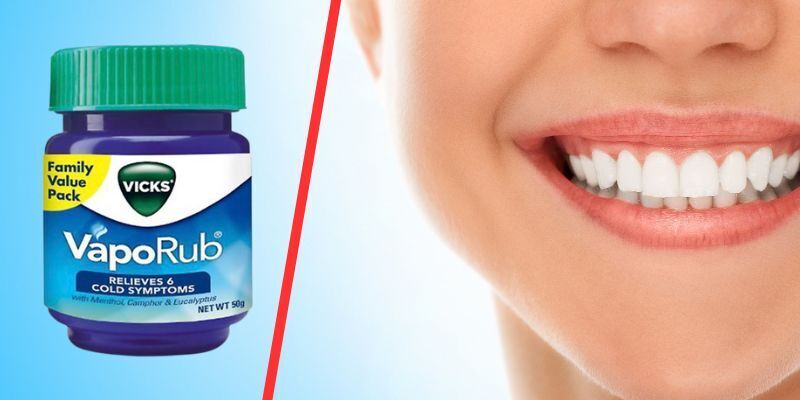|
Steatorrhea is a stool that floats, looks greasy, and smells harsher than usual. It is the result of fat slipping through undigested. Doctors run tests to confirm the cause. Treatment then focuses on diet changes, enzyme replacement, or fixing conditions like celiac or Crohn’s. |
Imagine standing in the bathroom, flushing, and realizing the stool won’t sink. It floats, pale and greasy, leaving an oily film on the water. The smell is sharper, almost rancid. That isn’t random; it’s often a sign of Steatorrhea.
Some brush it off as a one-time thing after eating something heavy. But if it repeats, it usually means fat isn’t being absorbed properly. That points to problems deeper than digestion, sometimes pancreatic, sometimes liver, sometimes intestinal.
What Is Steatorrhea?
Steatorrhea's meaning is simple: fat leaking into stool because digestion isn’t doing its job. Normally, bile from the liver and lipase from the pancreas slice fat into absorbable parts. When either fails, fat slides through untouched. The outcome is obvious: oily stool, pale in color, floating, with a smell that lingers longer than normal waste.
Among chronic pancreatitis cases, research reported that out of 2,153 patients, about 14% already showed steatorrhea when first diagnosed. That’s not a small number. It proves the condition is more than a bathroom annoyance; it’s a medical signal that something important is missing in digestion.
What are the Causes of Steatorrhea?
Steatorrhea has many causes, but they circle back to four buckets: problems in the pancreas, bile issues, intestinal damage, or dietary factors. Each one creates its path to fatty stool.
1. Digestive System Disorders (Pancreatic Insufficiency, Cystic Fibrosis)
The pancreas makes lipase. Without it, fat stays whole. Chronic pancreatitis slowly kills enzyme production. Cystic fibrosis thickens mucus so much that enzymes can’t reach the gut. Some babies are born with enzyme defects and show greasy stools before their first year. The stools don’t just smell, they coat the toilet bowl like grease on a pan.
2. Liver and Gallbladder Problems (Bile Acid Deficiency, Gallstones)
Bile works like soap in a dishwasher. It breaks fat down into smaller droplets. Without enough bile, fat simply drifts out with stool. Gallstones block ducts, stopping bile from entering the intestine. Bile acid deficiency prevents emulsification. Babies with biliary atresia can’t move bile at all, leaving pale, bulky stool in their diapers. Parents often notice this long before doctors run tests.
3. Intestinal Conditions (Celiac Disease, Crohn’s Disease)
The intestine is where nutrients are absorbed. Damage here means food passes unprocessed. Gluten triggers the immune system in people with celiac disease, scraping away the lining. Crohn’s disease inflames sections of the bowel until they stop working. Both lead to foul-smelling stools, bloating, and loss of weight. Patients describe the odor as sour, almost metallic, and hard to mask.
4. Dietary Factors (High-Fat Diets, Medications Interfering with Absorption)
Sometimes it's a lifestyle. Fast food binges rich in oils overwhelm the system. Medications like orlistat block fat absorption on purpose, leading to oily leaks that most patients never expect. Even lactose intolerance confuses digestion enough to mimic stool with oily residue.
Common Symptoms of Steatorrhea
The bathroom gives the first hints. The stool looks pale, floats, and coats the water with grease. The smell is stronger, sharp enough that air fresheners barely cover it. That’s classic steatorrhea symptoms.
Other signs build quietly. Diarrhea, indigestion, cramps. Clothes loosen because of unplanned weight loss. Energy drops. When ignored, the body starts showing weakness in muscles, hair thinning, and brittle nails. Chronic cases produce anemia and exhaustion that sleep doesn’t fix. It’s not just messy stools; it’s malnutrition showing up in daily life.
How Steatorrhea Is Diagnosed
Doctors don’t stop at appearance. They measure and test. A greasy stool might look obvious, but proper diagnosis digs deeper. Lab work, imaging, and scopes uncover why fat isn’t absorbed and where digestion breaks down.
|
Diagnostic Tool |
What It Checks |
Why It Matters |
|
Stool Fat Test |
Fat output in grams |
Confirms fatty stool |
|
Blood Panel |
Vitamin and mineral loss |
Shows malabsorption |
|
Imaging |
Pancreas, gallbladder, ducts |
Finds obstructions |
|
Endoscopy |
Tissue health |
Detects disease damage |
Diagnosis isn’t about naming the stool type; it’s about finding the blockage in the system that caused it.
Steatorrhea Treatment Approaches
The cure depends on the cause. Diet fixes mild cases. Chronic ones need structured therapy.
1. Medical Treatment
Doctors sometimes start with basic drugs, antacids, probiotics, and anti-diarrheal pills. They calm symptoms but don’t fix the root. Think of them as bandages while bigger treatment is planned.
2. Pancreatic Enzyme Replacement Therapy
Capsules with enzymes replace what the pancreas can’t supply. Meals become easier to digest. Patients notice stools stop floating, smells improve, and greasy residue fades. A small pill changes the entire process of digestion.
3. Bile Salt Supplements
For patients missing bile flow, supplements fill the gap. They emulsify fat, so absorption happens again. Many patients describe stools turning from greasy to firmer within weeks.
4. Treating Underlying Conditions
-
Celiac disease: Gluten-free diets bring relief. Even crumbs can trigger relapse.
-
Crohn’s disease: Managed with biologics and immunotherapy.
-
Infections: Cleared with antibiotics.
Fix the base problem, and the stools follow.
5. Lifestyle & Dietary Management
This part sits in the patient’s hands. Reduce fat, avoid alcohol, stay away from processed junk. Add vitamins A, D, E, K to cover what the gut can’t absorb. Eating smarter shifts stools back toward normal.
Complications If Left Untreated
Steatorrhea isn’t harmless if ignored. Malabsorption grows into nutrient crises.
-
Night blindness from vitamin A loss.
-
Weak bones from vitamin D shortage.
-
Bleeding risk from vitamin K deficiency.
-
Muscle weakness from low protein and iron.
-
Chronic infections from poor immunity.
A stool problem becomes a body problem if left alone.
When to See a Dermatologist
Skin often shows problems that start in the gut. People with steatorrhea sometimes develop rashes that itch, dry patches that never improve, or nails that split no matter what products they use. Hair may thin or fall out in handfuls, and wounds can take longer to close.
These aren’t random cosmetic issues but signals that vitamins and minerals aren’t being absorbed properly. A dermatologist may be the first to notice the pattern and suggest further checks. If those symptoms keep returning despite regular care, it is better to book an appointment rather than ignore what the skin is saying.
Best Tips to Prevent Steatorrhea
Prevention doesn’t mean following some complicated routine. It’s about small daily choices that save you the headache later. Think less fried food, more balanced meals. Think hydration, not sugary drinks. And honestly, paying attention to your body before things spiral makes all the difference.
-
Limit greasy, fried, or overly fatty meals that overload digestion.
-
Drink plenty of plain water instead of soda or alcohol.
-
Keep fiber steady; too much roughage or too little can both upset the stools.
-
Add foods rich in vitamins A, D, E, and K to cover absorption gaps.
-
Get routine check-ups so issues are caught before they turn chronic.
These tweaks don’t require perfection. They’re practical moves that help digestion stay on track and reduce the chances of oily stool returning. Small steps in the kitchen and regular health checks often prevent bigger problems down the line.
Final Thoughts
Think about it. A stool that floats, smells harsher, and leaves oily streaks in the bowl isn’t just an inconvenience; it’s a message. Steatorrhea points to fat slipping through unabsorbed, whether from the pancreas, bile, or inflamed intestines. Left unchecked, it drains vitamins, weakens muscles, and chips away at energy.
Patients often say the exhaustion feels worse than the bathroom troubles. The fix depends on the cause: enzymes, bile supplements, gluten-free diets, or treating infections. The goal is simple, get nutrients back into the body, not the toilet. Catch it early, treat it right, and the change feels real, not temporary.
वारंवार विचारले
Can dehydration worsen steatorrhea?
Yes. Thick stools show grease more clearly when the body lacks water. Hydration won’t cure steatorrhea, but it makes passing stool less painful.
Does exercise affect steatorrhea?
Moderate movement keeps digestion active. It helps ease cramps and bloating though it doesn’t replace medical treatment. Still, active patients often report milder malabsorption symptoms.
Can children develop steatorrhea?
Yes. Kids with celiac, cystic fibrosis, or biliary atresia often show greasy stool early. Quick treatment prevents growth problems.
Is steatorrhea linked to weight loss surgery?
Certain bariatric surgeries reduce fat absorption, leading to oily stool. Supplements are usually required afterward.
Can probiotics help?
Probiotics improve gut balance. They don’t cure steatorrhea but reduce bloating and discomfort when used with enzyme or bile treatments.
-User-1754380331.png)
लिहिलेले







